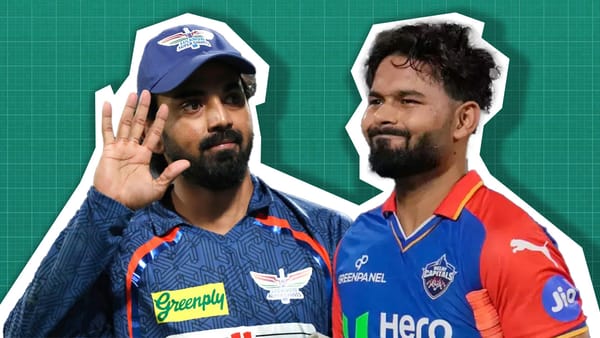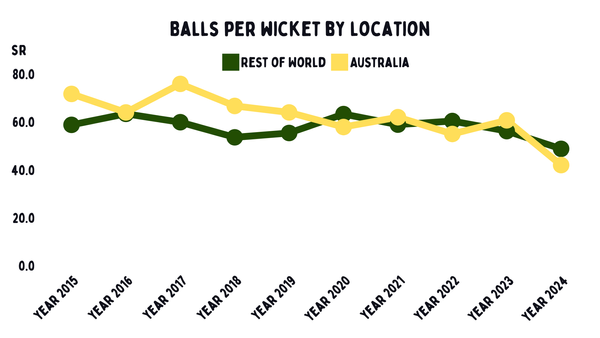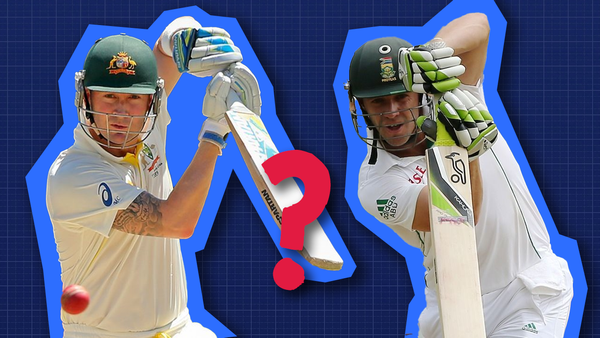When the Harmonster changed cricket
Harmanpreet won the WPL final. But as important as it was, her best work was getting women's cricket to this point.
Harmanpreet Kaur made 37 from 39 balls in the WPL final. It may not have seemed like a lot, but it was enough for her team to win the first edition.
But she won before she was even there, in fact, women's cricket won before she stepped out on the field for this game.
And that is also because of what she did, but not in this game. Harmanpreet Kaur played probably the most influential innings in women's cricket.
That is not to downplay the many incredible innings in the game's history. I am sure Betty Snowball played some extraordinary knocks, like when she was run out for 99 at the Oval. Or maybe one of Myrtle Maclagan's great knocks. Am I just mentioning these two because they have great names, maybe? But they were also fantastic players.
And in terms of innings, Belinda Clark's first ODI double hundred for men's or women's cricket was another huge innings.
That is not even mentioning Rachael Heyhoe-Flint, who did everything. There is no figure in the women's game to compare her to. She is not a great of cricket, but a founder. She was living in a world where Len Hutton had just said: "A woman playing cricket? That's just like a man trying to knit!". And yet she played, captained, and invented the cricket World Cup. Any one of those is amazing, no one else in the game's history has ever done all three.
That she invented the World Cup before the men was another incredible feat. The only person on her level in terms of cricket is WG Grace. And to be honest, the big fella did little else other than be really good at cricket in a way that made him the sport's true global superstar.
Heyhoe-Flint did just as much for cricket as Grace, and she didn't do it for herself, she did it for the sport. Grace wasn't out on street corners grabbing people's spare change to fund the game or writing up a solid 150 words on matches he played in so there would be coverage of them. That is not what great male cricketers have to do, but that is what Heyhoe-Flint did. She didn't change cricket just because she was a great cricketer; she changed it because she was great.
And the truth is, many women helped move the game forward, Betty, Myrtle, Belinda and Racheal are just some of the names. But none did it as violently as Harmanpreet.
The Australia she faced in the 2017 World Cup was not quite the team we see now. But it was well on its way. An embarrassing loss to the West Indies in the previous year's T20 World Cup rattled them, and they knew what they were building towards. And crucially they had already built the Women's Big Bash, so they were professionals.
And if you are thinking, sure, but maybe this was before they assembled their best bowling attack. Oh, no, this was lit. 23 women have taken over 100 ODI crickets, three of them bowled to Harmanpreet in this spell. Megan Schutt, Jess Jonassen and Ellyse Perry.

It's basically an All-Star lineup.
The other main bowlers were Ashleigh Gardner and Kristen Beams. This was a powerful team.
It's not just the talent, though, is it? The Australian women had won six of the first ten World Cups at this point. India's biggest success was a final, where Australia smashed them.
And Harmanpreet wasn't a big star at this point. Her ODI record was ok in terms of average, but she scored pretty slow. You can see how much better she was after this.

It wasn't as if her T20 numbers were great either. At this point, she had played seven years of international cricket, and while there were signs she had talent, nothing like this.
This was epic.
But it didn't start that way. In fact, it was an incredibly slow innings for a very long time. After 39 balls she was only 19 runs. But as you can see that certainly changed.
In fact, let's be clear, she went from a strike rate of 68 at the 25-over mark, and then for the back half of the game, she struck at 231. That was not normal for women's cricket in the past, certainly not at that time, and really, even since, that number seems crazy. That is some shift of gear.

The entire innings was two balls longer than her second-longest knock. And yet she scored virtually a hundred more runs.

Against the best bowlers around, in a semi-final of a World Cup.

The explosion started when Kristen Beam misses the cut square, the umpires give it as a free hit, and Harmanpreet is unchained.
I was at this game, and I kept waiting for the innings to end. Not because she was batting poorly, but because she kept swinging everything across the line to midwicket. Surely the law of averages said that she found a fielder at one point, played over one, or skied the ball. You cannot attack this hard and get away with this. But she did. Like the entire thing was pre-ordained.
As if the Snowball and Myrtles of old were guiding each shot into safety as they knew what this knock could mean.
Oh, and that world-leading bowling attack, well there are still pieces of them you can find on the Derby Pentagon outside the ground.
Look at Jess Jonnassen, who is probably the best defensive bowler in the women's game. She got torched. Beams got away pretty well, considering she almost had the yips. Megan Schutt is one of the best seamers in the world, and she went around. Ashleigh Gardner was only young then, but she still went for almost ten an over. And that was after going for nine runs in her first five overs. Harmanpreet took her for 23 in an over after that.

But my favourite is Elyse Villani who was a proper part-timer. She was thrown the ball in hope more than anything else.
Across all international cricket, she only bowled 41 overs outside this one.

This is the equivalent of throwing a hairdryer at a Tornado. And if you want to know how much this affected Villaini, she bowled only another 2.2 overs in all professional cricket after this.
Ellyse Perry was next to have a crack. And looking at her compared to the rest, you would think she did well. But Perry only bowled one late over, and lucky for her, Harmanpreet only faced her two balls. She got a little bit of stick early on in the ramp-up. But that was it. And we're still talking about a strike rate in the 80s. It only looks small because of the mountains around it.
171* was the final damage. An innings where she made 4.75 times the score of the next-best Indian. Yeah, she made over 60% of their total runs.

This was an all-time knock.
But women had played incredible innings before, like the Belinda Clark one. But this had three key ingredients. This was a World Cup that had a little bit of media attention going on. It was broadcast around the world. And Harmanpreet made this innings for India.
Social media, TV, Streaming, uncles WhatsApping their nieces, this hitting was everywhere. Harmanpreet smacked women's cricket into loungerooms.
Five times more Indians watched this tournament than the last. One of the main surges was in rural India. Harmanpreet rewrote the map for women’s cricket.
It wasn't just her, all those women I mentioned before played their part. In her team were two legends, Jhulian Ghoswami and Mithali Raj. Harmanpreet swung across the line, standing on the shoulders of greats. But it was her hits that made the biggest impact.
Harmanpreet exploded at a time when the sport had some momentum and did it in a way that changed everything.
That she lead the first WPL-winning team that was watched by millions was poetic justice for all she had done before. She didn't just make people look at the women's game differently, she just damn well made them look.
The day she became the Harmonster and ate the Australians she also changed the game. That is a hell of a thing to do in one ODI knock.




